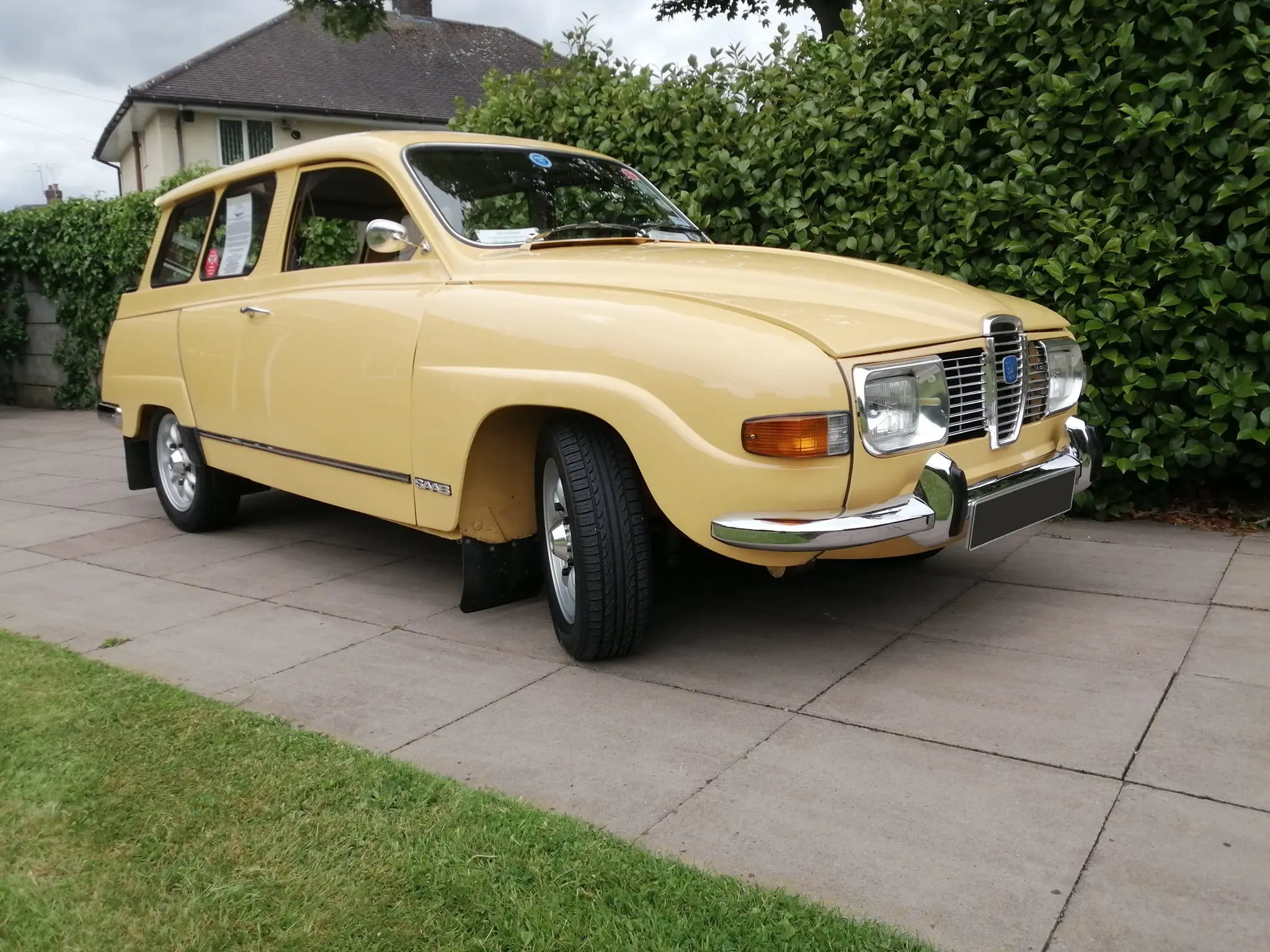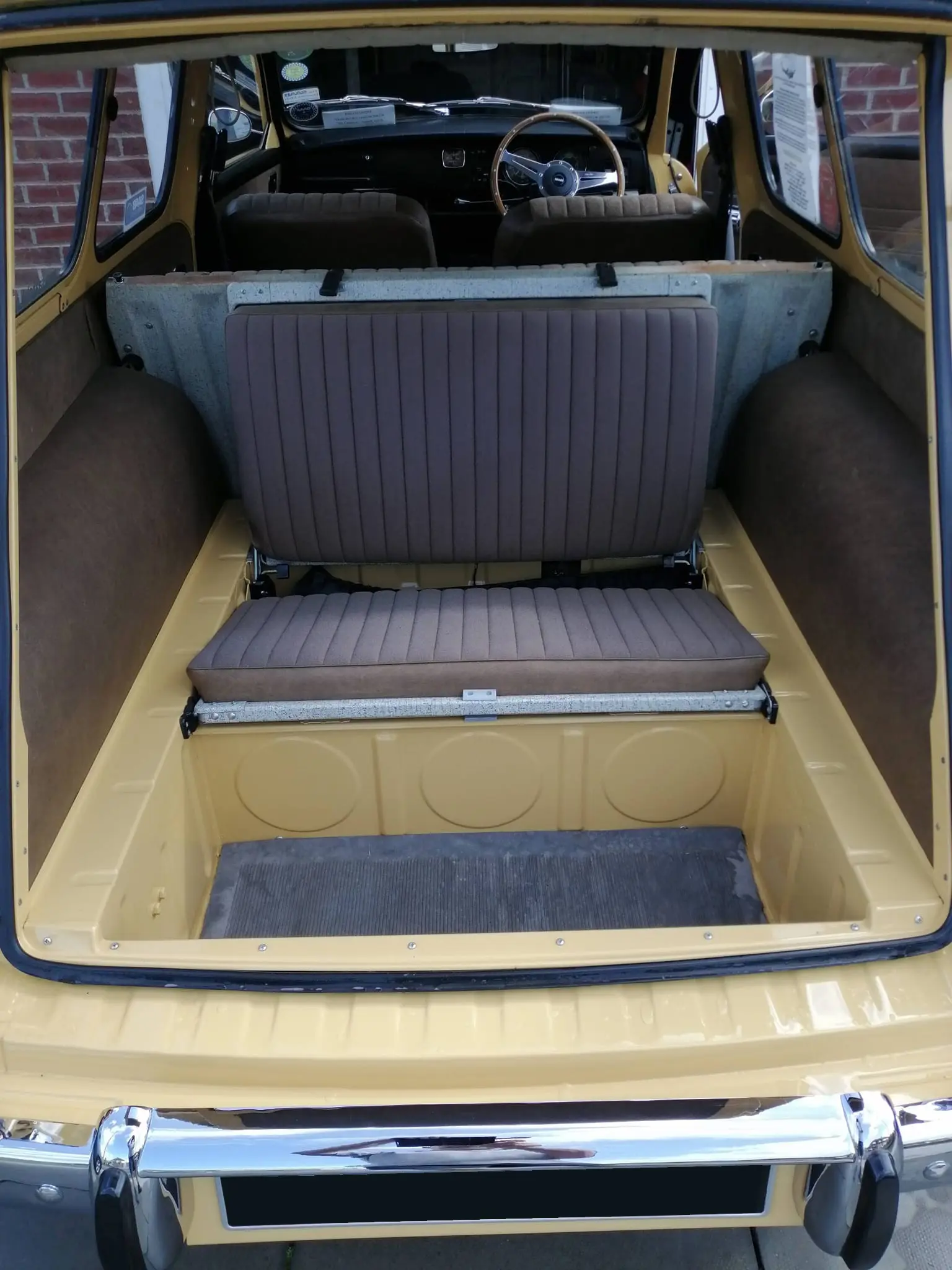GO SWIFT, GO SAFE – GO SAAB 95
18 June 2024
Recently, I had the great pleasure of being reacquainted with one of my favourite cars. In the early 1970s, a Saab 95 stood apart from a Ford Escort Mk. I or Vauxhall Viva HC Estate. Its uncompromising lines were a masterpiece of post-war industrial design. The gear lever was on the steering column, and there was even a transmission freewheel. This device allowed the driver to change gear without employing the clutch. Best of all, Saab thoughtfully included a third row of rear-facing seats in the boot.

The original two-stroke 95 made its bow in May 1959, nine months before the 96 saloon. UK sales commenced in 1960 and four years later a facelift gave the line-up a diagonally split dual circuit braking system and a new ’long nose’. Saab boasted of the “taut, slim, lean lines”. By then, two-stroke engines seemed increasingly anachronistic to Western European and North American drivers.
After testing several alternative units, Saab unveiled the 95 and 96 V4 in 1966, with power from the 1.5-litre Ford Taunus engine. Car magazine thought the V4 had rescued Saab “from the slough of two-stroke despond”. Motoring writing often seemed more eloquent in the 1960s. Saab gave the 96/96 a new grille for the 1969 model year and a new Amber Yellow paint option for 1972. This shade suited the 95, making it look both purposeful and jaunty—a rare combination that few marques other than Saab could have achieved.

In 1972, a 95 cost £1,233 compared with £1,138 for a Viva SL Estate or £1,100 for an Escort XL Estate. This made it a fairly expensive proposition, but Saab enthusiasts would argue it was worth every penny. For them, quality and durability meant more than a showroom price and trends in automotive fashion.
And the 95 offered so much to the discerning buyer. The detailing was typical of Saab – the spoiler over the rear screen, the side-window demister vents and the deep well for the rear passengers’ feet. The column change made many drivers vow never to use a floor gear lever again, and the 95’s handling put many younger rivals to shame. The Saab would also start in the vilest of weather, as owners of other cars might trudge through the snow towards the nearest AA or RAC call box.
95 production ended in 1978, and Chris Boffey’s handsome example is just one member of his Saab fleet – he also owns two 96s. We look forward to writing about his line-up, especially as the 95 more than lives up to the warning made by Saab GB in their brochure. They advised, “Don’t fall for body shape and colour alone. Fashion in body design leads many astray”. Instead, choose the 95 - “When form becomes functional”.
With Thanks To: Chris Boffey and Jon Bentley.
